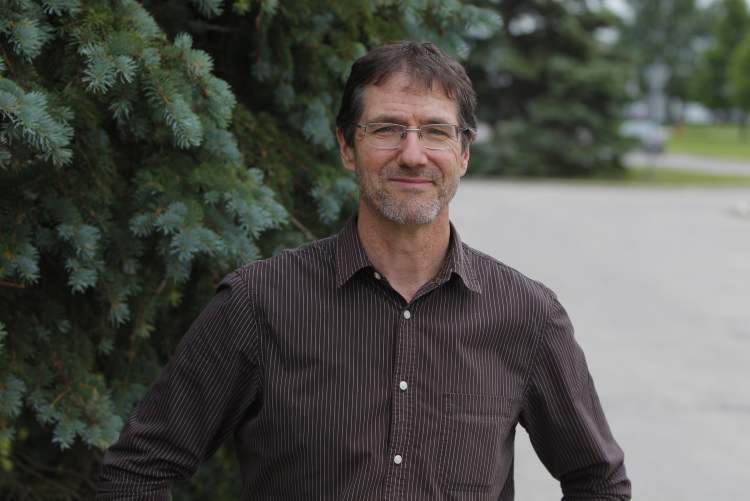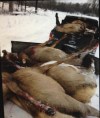Elk shootings stir calls for action
Aboriginal hunters kill dozen animals within minutes
Advertisement
Read this article for free:
or
Already have an account? Log in here »
To continue reading, please subscribe:
Monthly Digital Subscription
$0 for the first 4 weeks*
- Enjoy unlimited reading on winnipegfreepress.com
- Read the E-Edition, our digital replica newspaper
- Access News Break, our award-winning app
- Play interactive puzzles
*No charge for 4 weeks then price increases to the regular rate of $19.00 plus GST every four weeks. Offer available to new and qualified returning subscribers only. Cancel any time.
Monthly Digital Subscription
$4.75/week*
- Enjoy unlimited reading on winnipegfreepress.com
- Read the E-Edition, our digital replica newspaper
- Access News Break, our award-winning app
- Play interactive puzzles
*Billed as $19 plus GST every four weeks. Cancel any time.
To continue reading, please subscribe:
Add Free Press access to your Brandon Sun subscription for only an additional
$1 for the first 4 weeks*
*Your next subscription payment will increase by $1.00 and you will be charged $16.99 plus GST for four weeks. After four weeks, your payment will increase to $23.99 plus GST every four weeks.
Read unlimited articles for free today:
or
Already have an account? Log in here »
Hey there, time traveller!
This article was published 05/01/2013 (4699 days ago), so information in it may no longer be current.
The killing of 12 elk in only a few minutes by First Nations hunters a week ago near Swan River serves as a wake-up call to the province to be more active in preserving the province’s big-game wildlife, critics say.
Critics say that doesn’t mean undermining established First Nations and Métis hunting rights, but doing more research to get a better understanding of moose, elk, caribou and deer populations throughout the province and enforcing sustainable hunting.
“Our NDP government has got to start taking responsibilty for the environment,” said Dwight Gelhorn, spokesman for hunting lobby group Safari Club International. “I realize we’re at a time of budget restraint and that one of the easiest things to do is cut back on wildlife resource efforts because wild animals don’t vote.

“But that can be a very costly mistake, because once it reaches a tipping point, you can’t bring it back.”
That tipping point is already being seen with dwindling moose populations in the province and could be seen with elk, Gelhorn and other critics say. The province imposed moose-hunting bans in the Duck and Porcupine mountain areas in July 2011.
“We all share in the resource,” Gelhorn said. “Natural Resources should have to have the clout to set firm rules and enforce them. It shouldn’t matter who you are; if the population is in jeopardy, it’s in jeopardy for all of us.”
Vince Crichton, a retired manager of game, fur and problem wildlife with Manitoba Conservation, said if the province doesn’t do more to protect wildlife, licensed hunting in the province — hunting and angling trip expenditures in Manitoba were worth $469.1 million in 2010 — will disappear.
“If this continues like this, licensed hunting as we know it in Manitoba will be history in 10 years or less,” he said. “If it keeps going on like this, there won’t even be opportunity for non-hunters to go out and view animals.”
Crichton also said First Nations hunters have to become more responsible and accept their traditional hunting rights have changed with declining moose stocks. “If First Nations people want to be able to continue to exercise treaty rights they have to adapt, they have to change. It just can’t go on.”
Jim Duncan, director of the provincial Wildlife branch, said the province is conducting aerial studies this winter in two large game-hunting areas — one in eastern Manitoba and the other on the west side of the province — to get a better handle on moose numbers. Aerial surveys will be conducted next year in the Duck and Porcupine mountain areas.
Duncan added the province’s wolf-management program saw 164 wolves removed last year to help the moose population recover. Three additional enforcement officers have also been hired to go after poachers.
He said what the province learns by its moose-recovery program will be applied to other big game.
“It takes considerable effort,” he said.

Paul Turenne, executive director of the Manitoba Lodges and Outfitters Association, said the issue isn’t a matter of aboriginal hunting rights, but sustainable hunting. He said the Manitoba Metis Federation’s laws of the harvest compel Métis hunters to protect wildlife and fish stocks for future use, such as not hunting or fishing during calving or spawning season.
“It’s not white people barging into Métis communities and demanding that they exercise their rights in a certain way,” Turenne said. “It’s coming from their own leadership.”
Vita-area resident Darryl Kantimer said it’s not just elk in the Duck and Porcupine mountains that are under threat.
Kantimer said a herd of about 60 elk was established in the RM of Stuartburn about 25 years ago.
He said with the ban on moose hunting, these animals are being killed more often by aboriginal harvesters.
“I don’t know if this herd is going to survive,” he said. “My fear is they’re going to be wiped out.”
bruce.owen@freepress.mb.ca


